The Europa League Final 2023/2024 between Atalanta and Bayer Leverkusen showcased tactical brilliance, pitting two of Europe’s most astute teams against each other. This article delves into a detailed tactical analysis of the match, examining the strategies employed by both sides, the formations that defined their play, and the key player movements that influenced the outcome. From the meticulous build-ups to the defensive setups, we unravel the chess match that unfolded on the pitch, highlighting the tactical nuances that shaped this thrilling encounter. Join us as we dissect the tactics behind the triumph and uncover the strategic elements that made the Europa League Final between Atalanta and Bayer Leverkusen a captivating spectacle.
Leverkusen Build-up
Low Build-up
In the low build-up, Bayer Leverkusen dropped with many players, looking to attract the Atalanta players and open the space in behind. They used their normal 1-3-4-3 formation, however Wirtz, who played as the striker dropped down as a number-ten, creating a 1-3-4-1-2 formation.
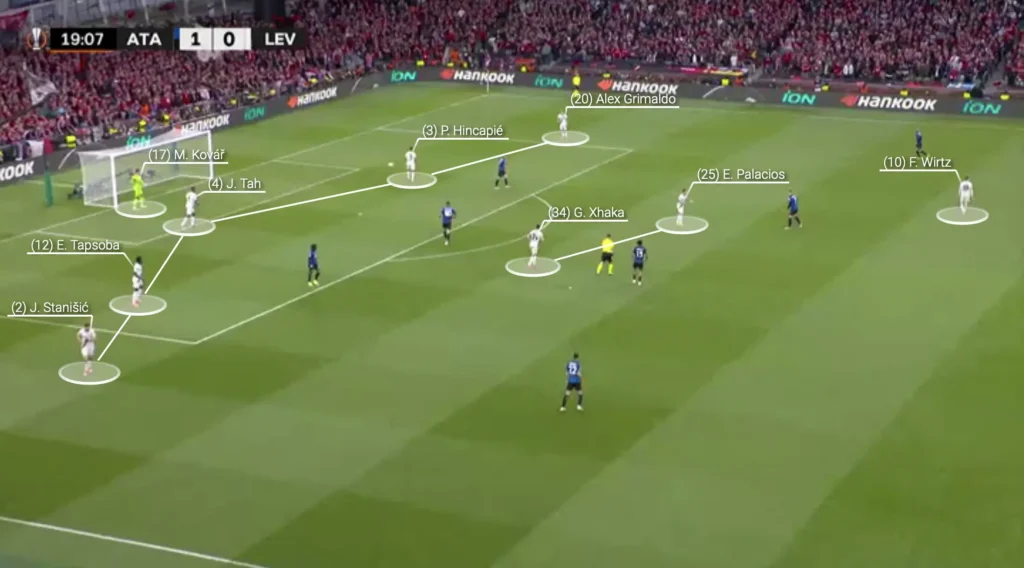
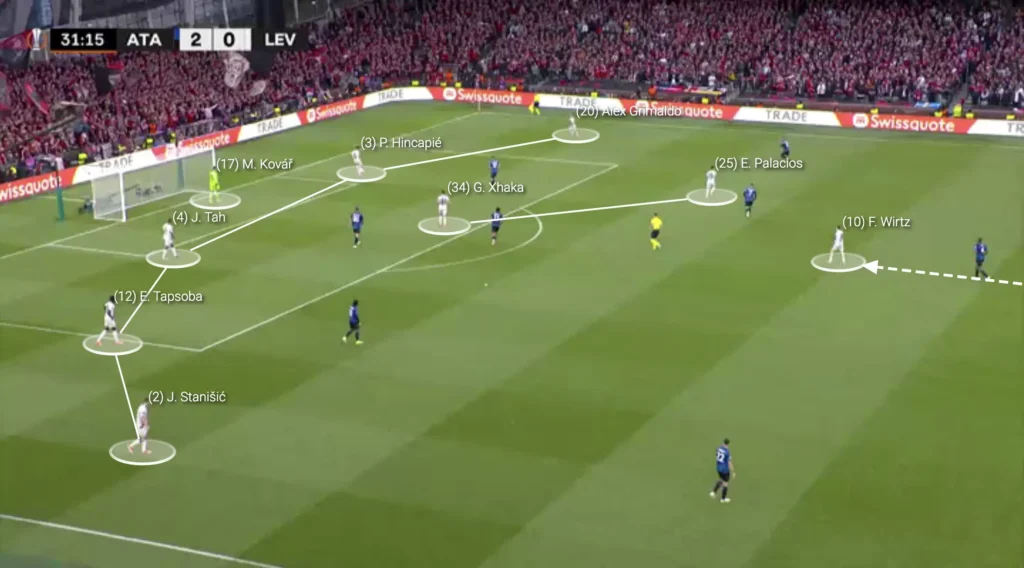
They did this to open up more space for the Leverkusen attackers, Frimpong and Adli, further up the pitch. Adli and Frimpong were 2v2 against two Atalanta center-backs and Alonso thought that they, through their pace and dribbling, could win those situations.
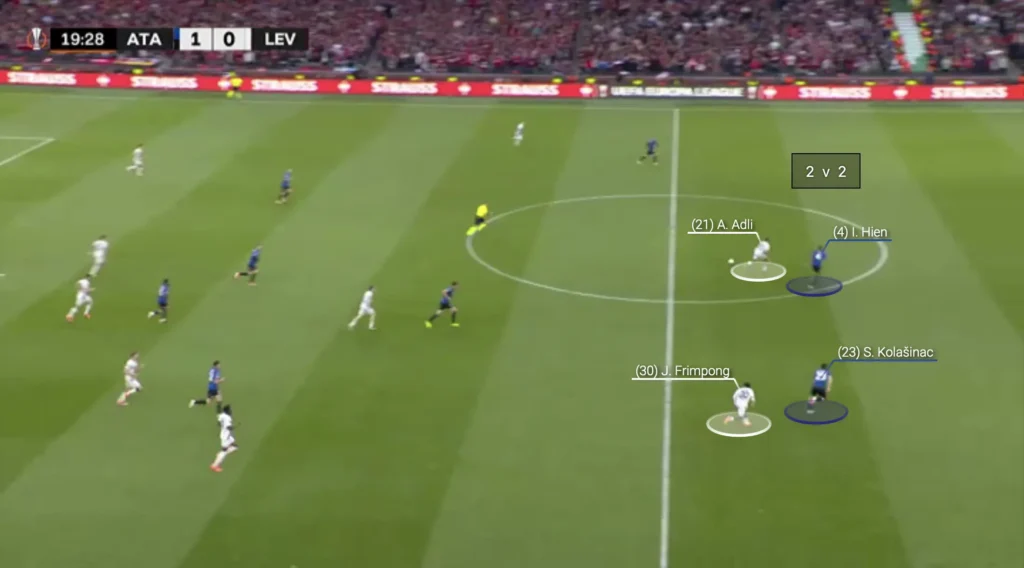
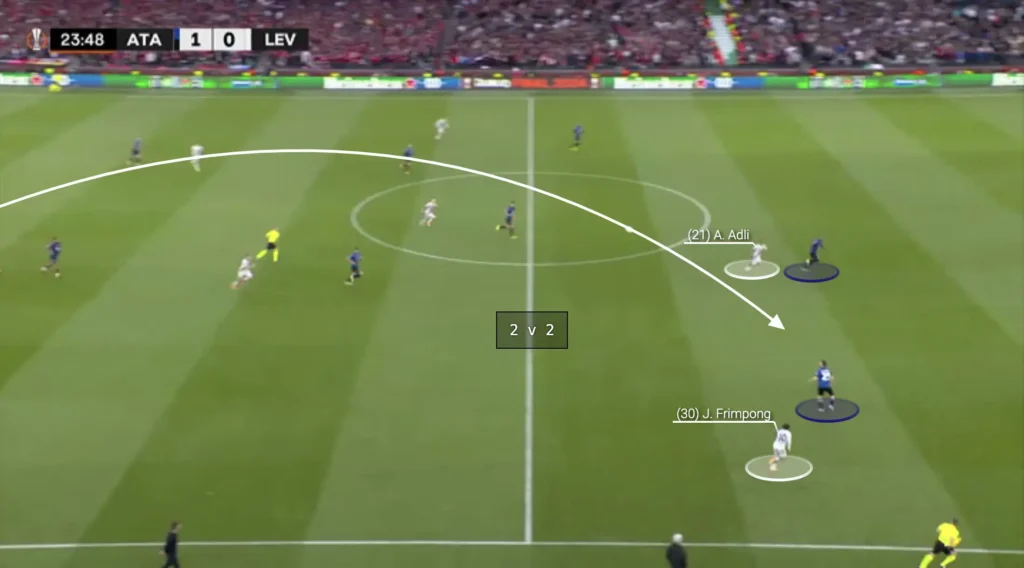
The Atalanta defenders were, however, very good in these situations and could neutralize Adli and Frimpong through their pace and strength.
High Build-up
In the high build-up, Leverkusen used a 1-3-2-4-1/1-3-2-5 formation.
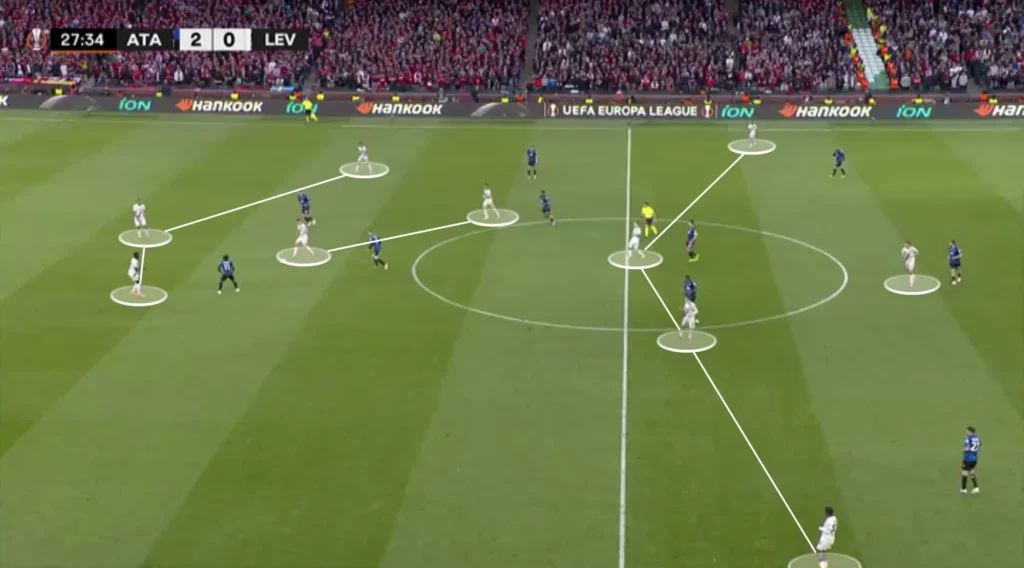
The wingbacks, Stanisic and Grimaldo, would often invert during the build-up. They came into an attacking midfield position, allowing Frimpong and Adli to stay wide. This forced the Atalanta players, who defended man-to-man, to run and think more, which sometimes caused them issues. However, the Atalanta players were very disciplined and followed their players, which made them difficult to break through.
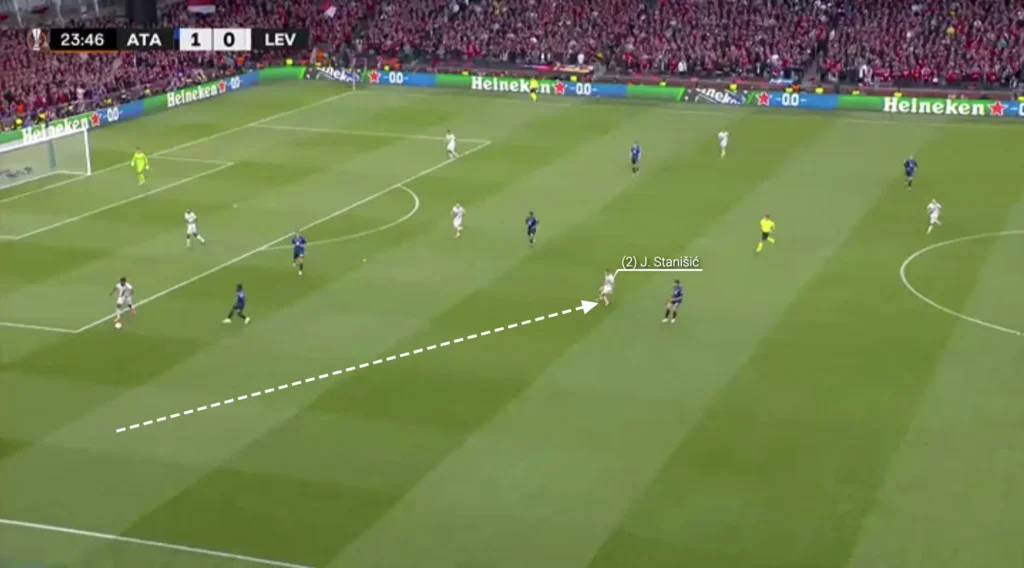

Leverkusen often tried to use Adli and Frimpong’s pace with balls in behind the Atalanta backline. The Atalanta defenders were very aggressive, which opened massive spaces in behind. The Leverkusen defenders, therefore, often used the long through-ball in behind the Atalanta defenders, looking to win the race and go directly at goal or restart the build-up higher up the pitch. The Atalanta defenders were, however, very quick to get back and dealt with most of the long balls.
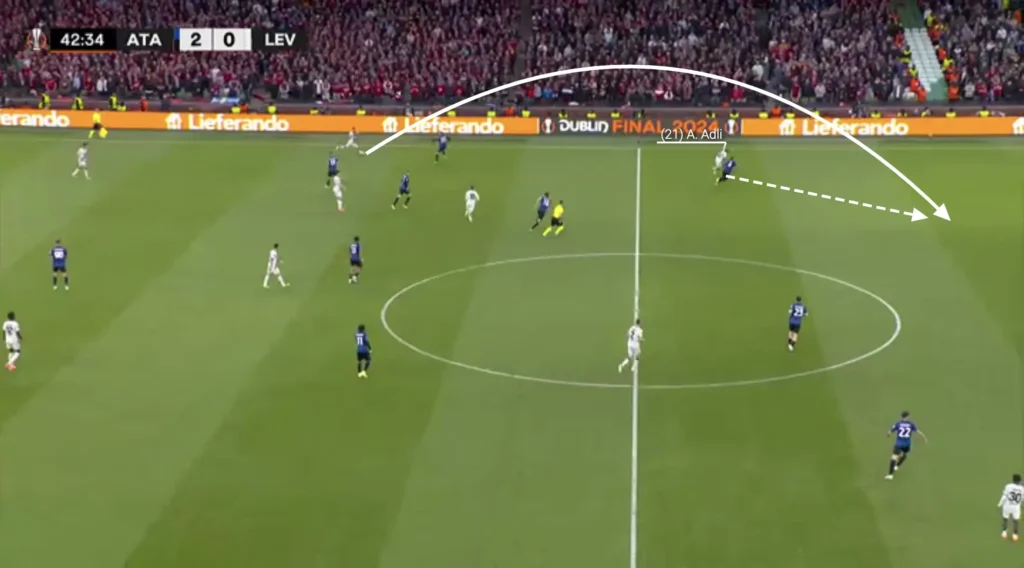
Second Half
In the second half, Boniface came on for Stanisic, moving Frimpong down to wingback and Wirtz to the right attacking midfield spot. Alonso’s aim with this was partly to get more attacking players on the pitch, but mainly to get Boniface’s hold-up play in the build-up. Leverkusen lost too many duels in the first half. Subbing on Boniface would enable them to win some longer balls against the Atalanta defenders, allowing them to take control of the ball higher up the pitch.
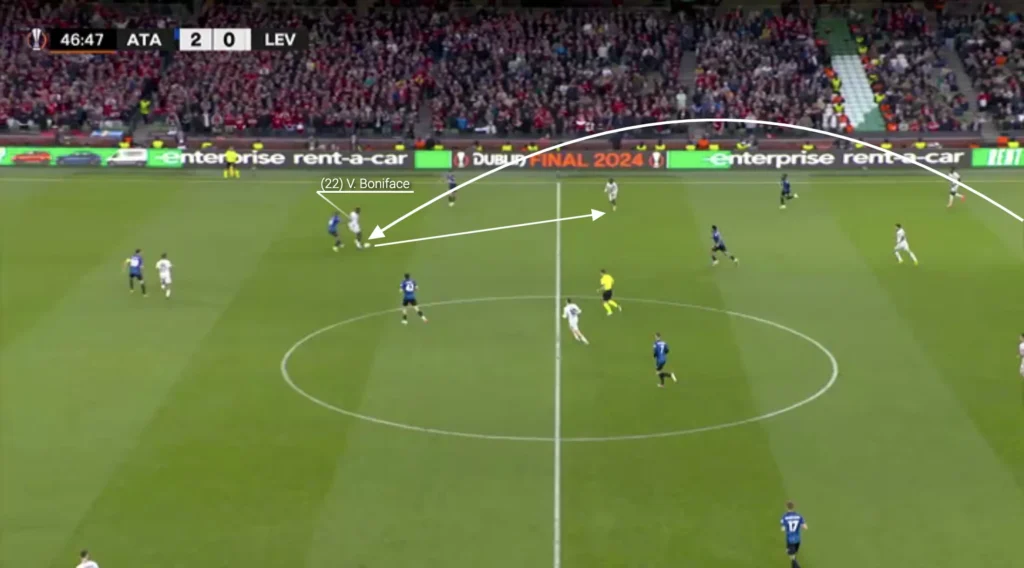
This, along with the Atalanta players getting tired, allowed Leverkusen to take more control of the ball in the second half. Despite this, they still struggled to create any clearcut chances.
Atalanta Press
Gasperini’s Atalanta defended in their normal man-to-man system all over the pitch. Everyone had an opposition player they were responsible for marking, which made it difficult for Leverkusen to find open players. The Atalanta players followed the Leverkusen players wherever they went and worked incredibly hard to always stay with their man.

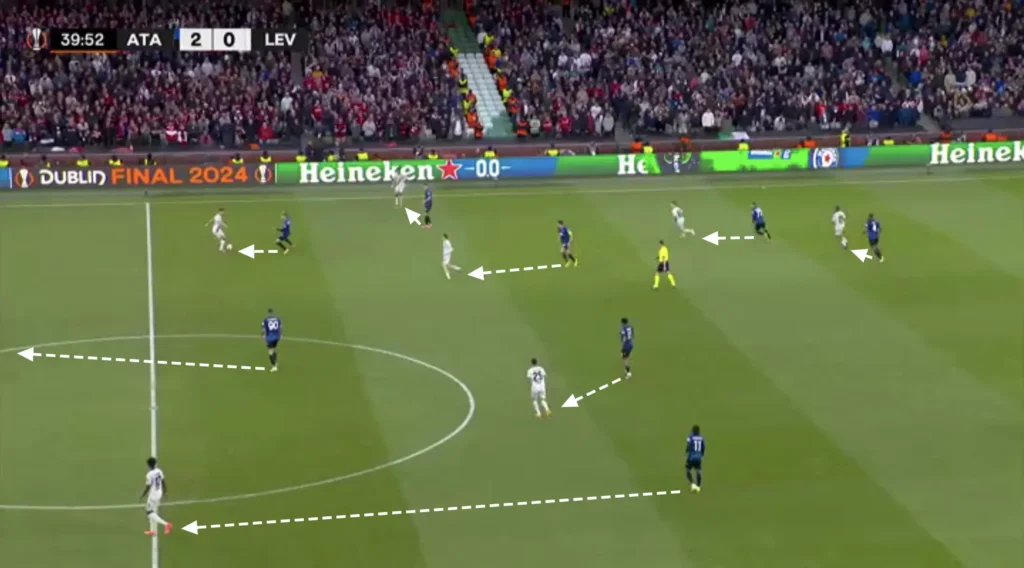
The Atalanta players were extremely aggressive and won almost every duel against the Leverkusen players. The center-backs would win the long balls and push up and win the ball when the ball got played into the Leverkusen attackers.
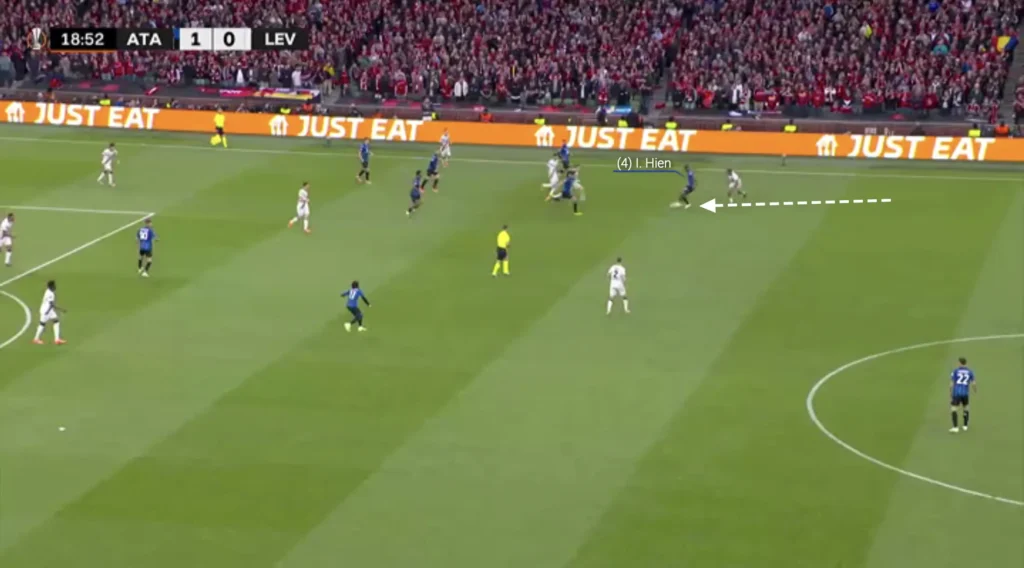
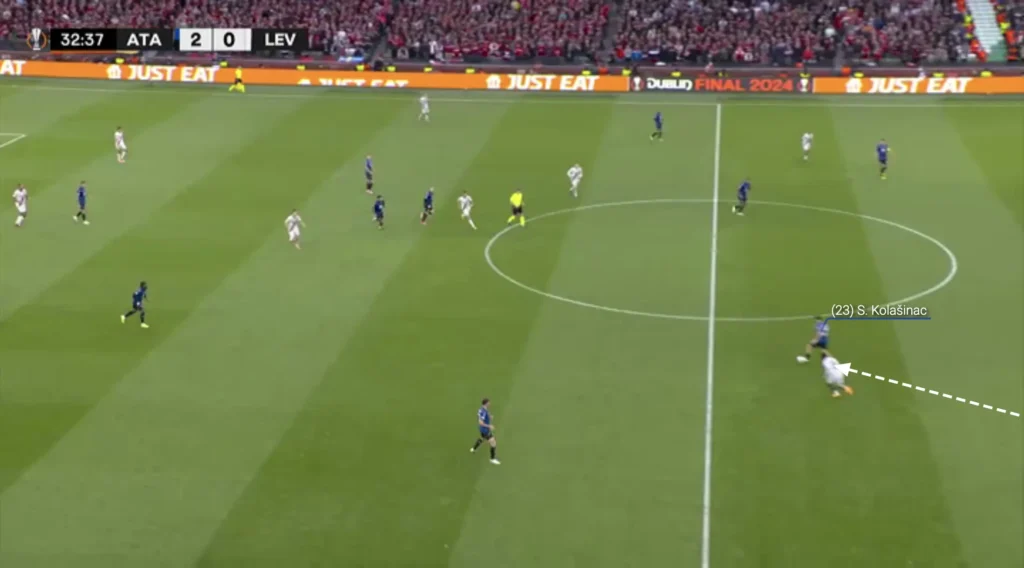
Atalanta looked to counterattack when they won the ball, scoring twice from directly going at Leverkusen after winning the ball.
Whenever the ball got played in behind the Atalanta backline, the players quickly got back to help their teammates. They were faster in this than the Leverkusen players, often allowing them to stop dangerous counterattacks and balls in behind by being numerically superior against the Leverkusen attackers. This completely neutralized Leverkusen’s only attacking idea, which helped Atalanta win the game.
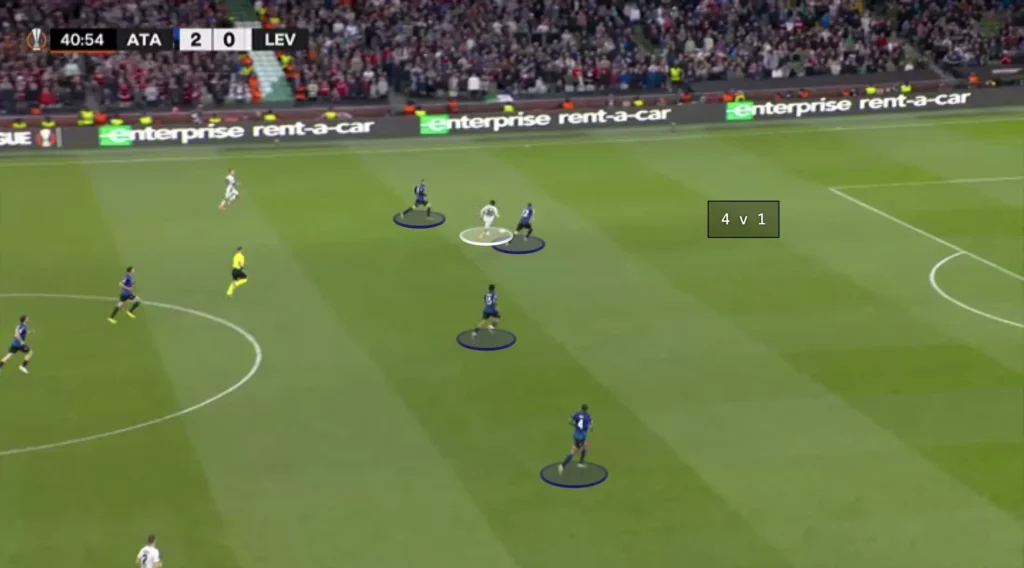
Atalanta also looked to squeeze the pitch when defending, constantly pushing the team up as much as possible. Every time Leverkusen played a slow, sideways pass or a back pass, the Atalanta player man-marking the Leverkusen player receiving the ball pushed up. When that happens, the rest of the team has to follow to stay compact. When the next pass came, the next player pushed up, forcing Leverkusen back even further away from Atalanta’s goal, making it harder to create chances.
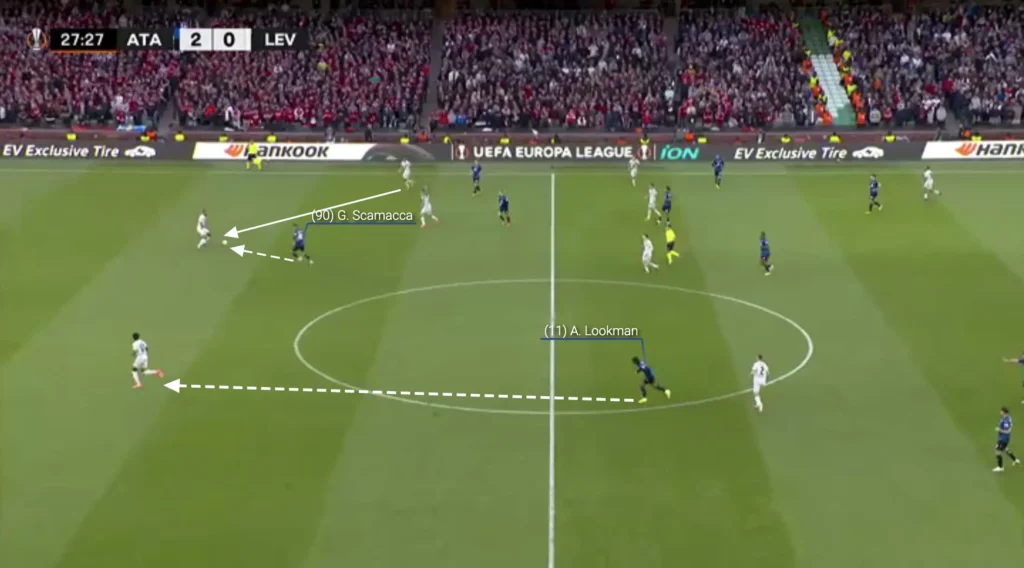
Atalanta Build-up
Gasperini set his team up in a 1-3-2-5 formation in the build-up, with a back-three, two holding midfielders, and five up front.
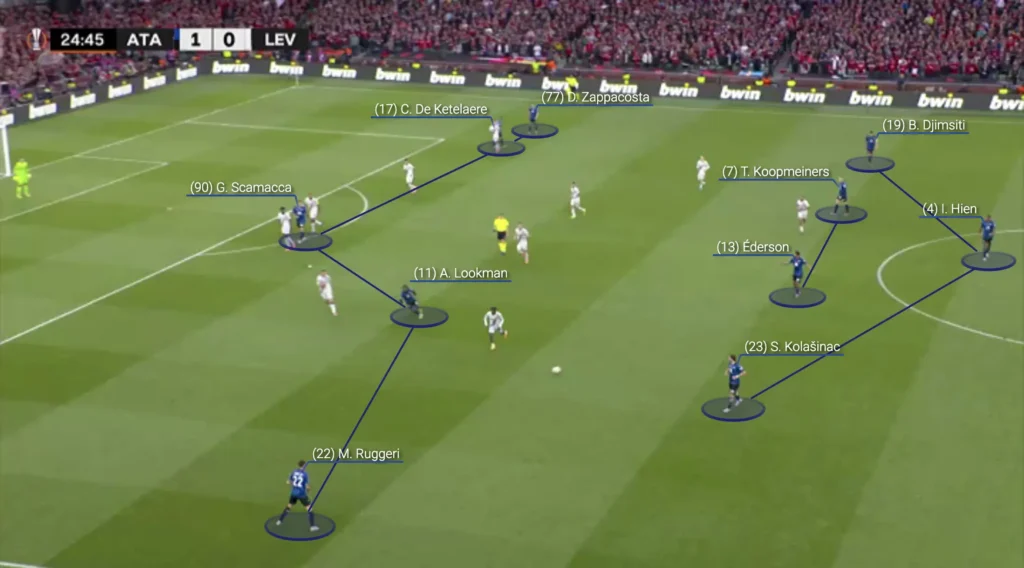
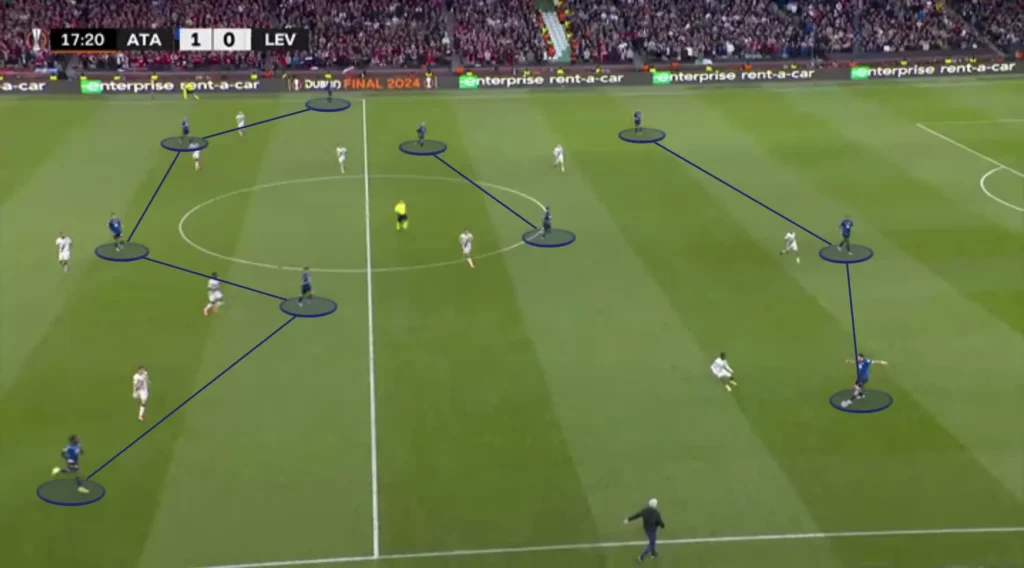
They were direct in the build-up and used many long balls to beat Leverkusen’s man-to-man press. The goalkeeper and defenders often went long, aiming at Scamacca and De Ketelaere to win the first and second balls or in behind the backline for Lookman to run.
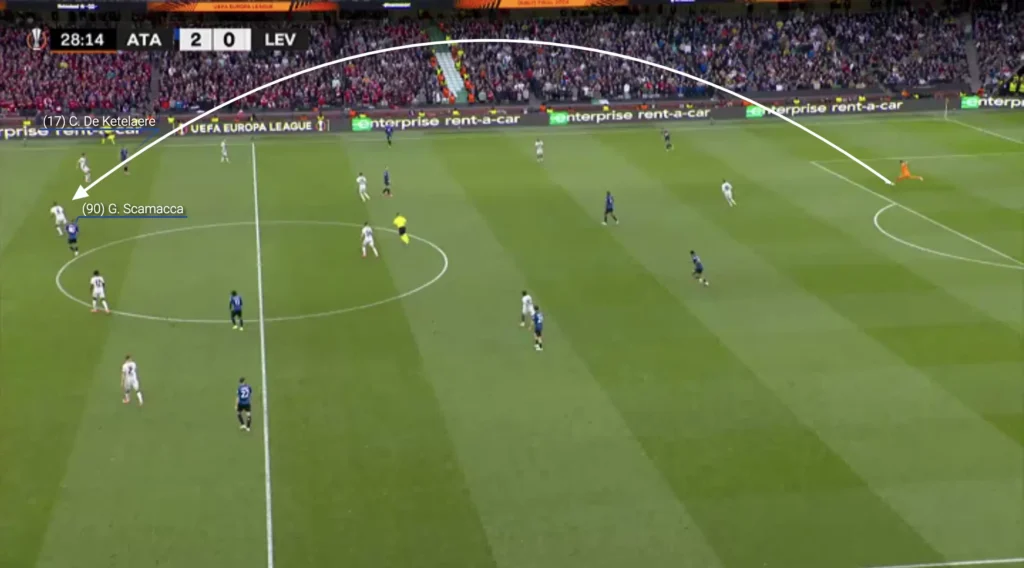
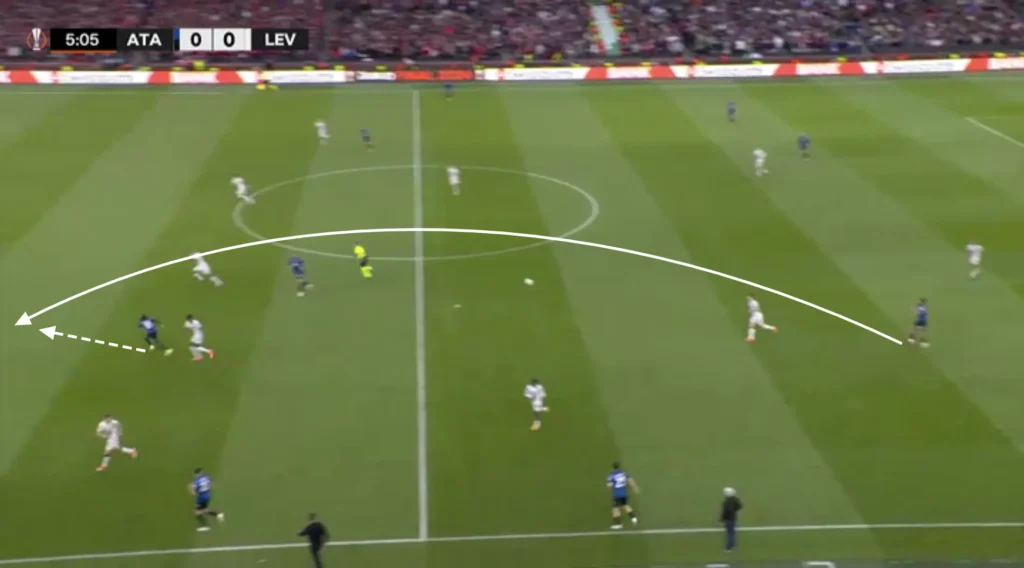
Leverkusen Defending
High Press
Leverkusen also used a man-to-man system in the high press. They pressed Atalanta hard, usually resulting in Atalanta going long. The difference between Leverkusen’s high press and Atalanta’s high press was that the Atalanta attackers often would win the long balls from the back, allowing Atalanta to get into their high build-up more often.
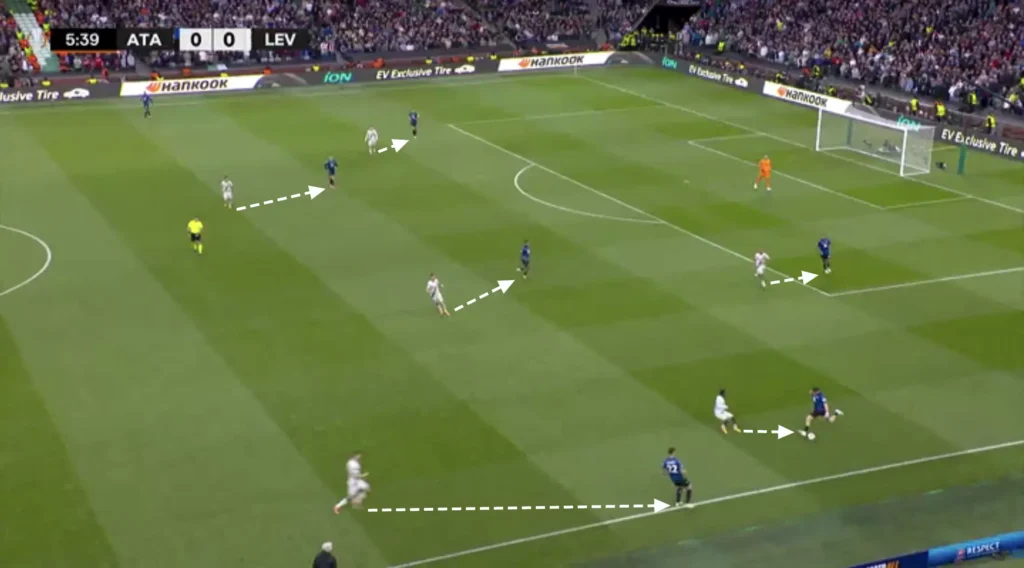
Low Press
In the low press, Xabi Alonso’s Leverkusen used a 1-5-4-1 formation. They looked to set up in a mid-block, always trying to stay compact while closing the center, forcing Atalanta out wide.
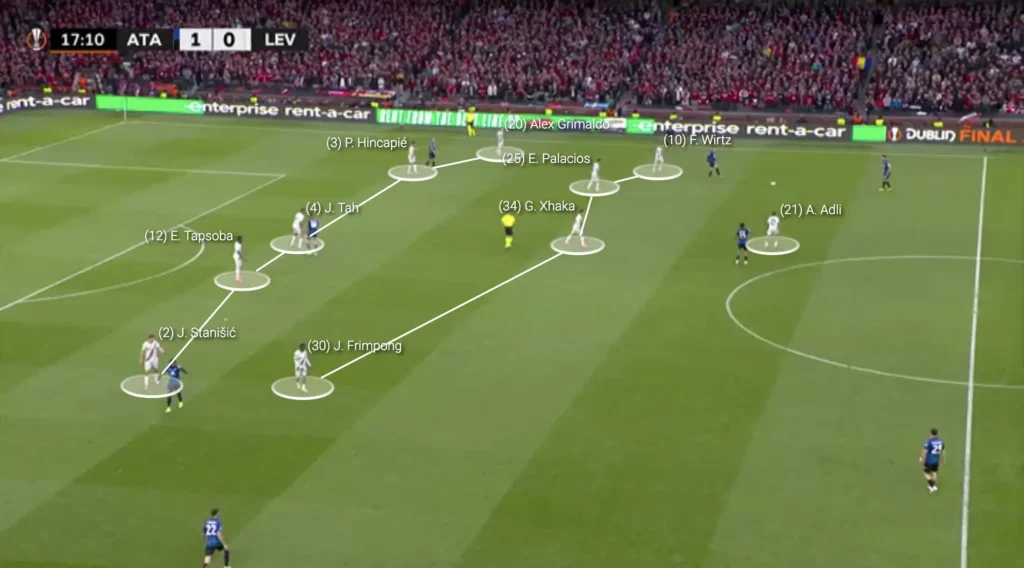
Final Thoughts
In conclusion, the Europa League Final of 2023/2024 between Atalanta and Bayer Leverkusen was a captivating showcase of tactical details from both teams. The strategic decisions made throughout the match highlighted the meticulous planning and adaptability required at this level of competition. Key formations, pressing schemes, and player movements were all critical in shaping the outcome of this high-stakes encounter.
The final underscored the importance of tactical flexibility and the ability to exploit the opposition’s weaknesses while reinforcing one’s own strengths. It was a match where every tactical nuance mattered, and the battle on the sidelines was as intense as the one on the pitch. As we reflect on this thrilling final, it’s evident that the tactical narratives woven by both teams provided a masterclass in modern football strategy. This analysis serves as a reminder of the beauty and complexity of the game, and the endless possibilities that tactical innovation can bring to football.
